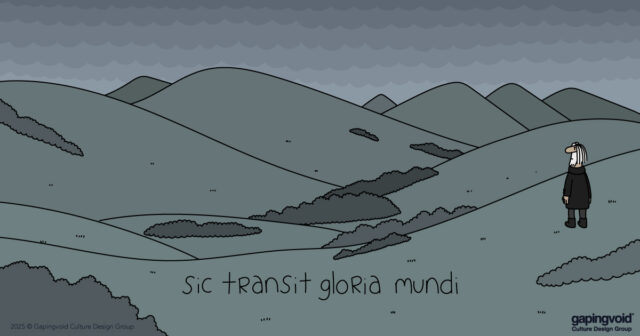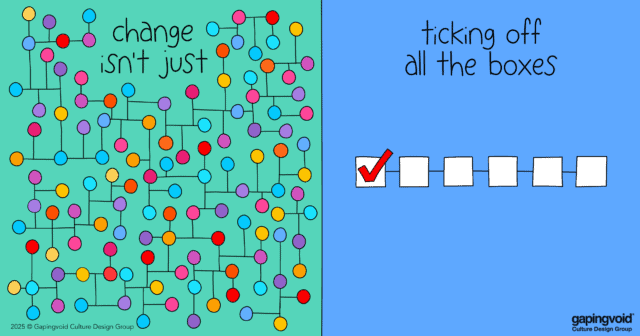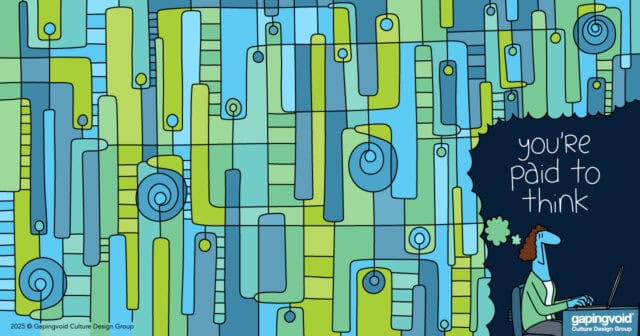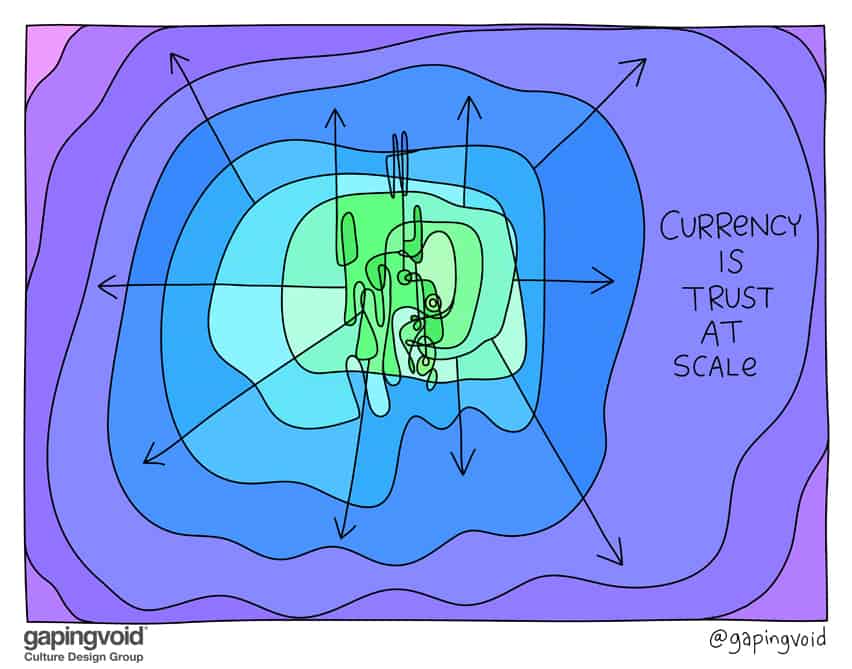
Systems of Trust surround us.
We rely on them thousands of times a day to help us establish trust with people we don’t know.
It could be a merchant in Venice who takes Visa, an Airbnb host in Rome, or an Uber driver in Florence. Ah, the pre-coronavirus days.
But it’s also the credit agency, the DMV, the college, law school, medical school, the restaurant reviewer, or the journalist on CNN.
Yet, the centralized models responsible for delivering trust as an output are showing their age.
They are not scaling well to handle the challenges of a digital world. The result is increased fear, uncertainty, and doubt for billions of people around the world.
Without trust at the foundation of our interactions with other people, the world becomes a very unpleasant place.
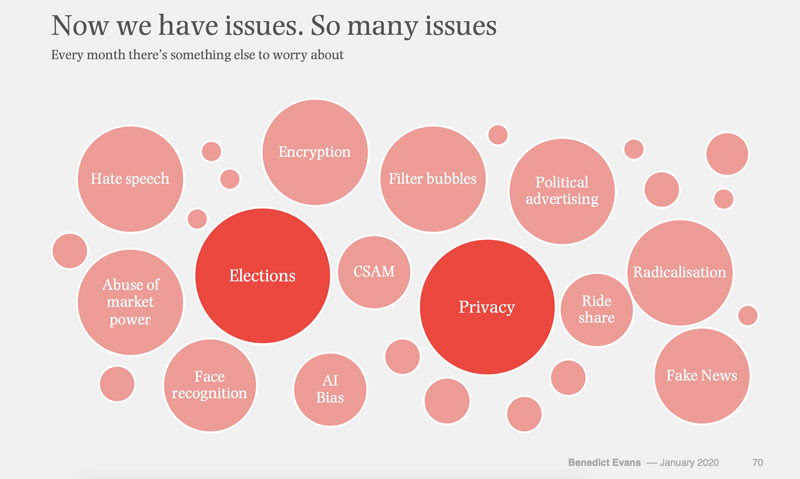
From Benedict Evans Tech in 2020: Standing on the Shoulders of Giants
For me, the potential of public blockchains represents a way to install digital trust at both a global scale and at a foundational layer.
But, explaining that to other people -and myself- has been a very frustrating challenge.
A decentralized system of trust is an entirely new paradigm because it’s based on an innovation that only arrived in 2009. And it’s not like I fully “get it” myself, even after 4.5 years studying it.
Still, there’s a strange feeling that is pulling and pushing me in this direction.
It’s scary and intimidating to go into uncharted territory. There are no guarantees of success and my ego and means of family support are on the line.
What provides some of the courage is a different System of Trust.
It’s one that we all have.
It’s our internal System of Trust.
You should know it. After all, you built it. You just have to learn to have confidence in its output.
It’s the voice you hear inside when you read a Gaping Void post telling you that “creatives need a lot of downtime.”
That’s when you put your internal System of Trust to work.
You begin to embrace the in-between states, turn down the self-criticism, recognize that the journey is the process, and not agonize about it.
Well, agonize about it less, at least…there’s only so much relaxation a recovering Type-A, east coast, semi-neurotic Jewish guy can do 😉
The first step is to expand your awareness about all of Systems of Trust that surround you.
As our awareness grows of the vulnerabilities of existing third-party Systems of Trust, we are compelled to improve our internal trust mechanisms. We make better decisions and we can do our best work.
The good news is that you don’t need a public blockchain to do it. But it’s going to help 😉

